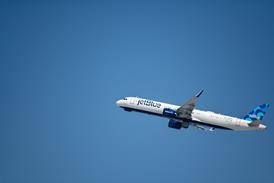'Failure to monitor and crosscheck' instruments considered probable cause of fatal Gulfstream business jet crash
In its final report, the US National Transportation Safety Board places the blame squarely on the flightcrew of a Gulfstream GIII business jet that crashed on approach to Houston Hobby airport on 22 November 2004, killing both pilots and one flight attendant. Highlighted, but not listed as contributing factors, were the failure and non-optimal performance of safety systems designed to prevent such accidents.
The aircraft, arriving to pick up former US President George Bush and other passengers for a trip to Ecuador, struck a light pole and crashed about 5km (3nm) south of the airport while on an instrument approach. The NTSB determined the probable cause to be "the flightcrew's failure to adequately monitor and cross-check the flight instruments during the approach". Contributing to the accident, the report said, was the flightcrew's failure to dial in the correct frequency for the instrument landing system until late in the approach. The correct frequency gives pilots the crucial vertical and horizontal guidance that leads to the runway end in foul weather. Also a contributor was that the pilots continued the approach despite company-based "stabilised approach criteria" that would have called for a missed approach.
Aside from the crew's performance issues, "safety nets" designed to prevent controlled-flight into terrain either did not work or could have worked better that morning. An alert warning system for controllers, derived from terminal radar, issued a low-altitude warning 11.5s before the crash - not enough time for the controller to contact the aircraft and for the pilots to take action. Controllers ultimately issued the alert 3-4s before the crash. Based on this accident and 10 others, the NTSB in July called on the Federal Aviation Administration to modify the warning system software in order to provide additional advance notice of an impending crash while minimising false alarms. The NTSB says the FAA has not yet responded to the safety recommendation.
More troubling is the apparent failure of the aircraft's Honeywell-built onboard ground proximity warning system (GPWS), which investigators determined should have sounded alarms at least six times during the final phases of the approach. The cockpit voice recorder did not pick up any alerts, nor did the crew discuss any problems about the device, according to the NTSB.
Theories as to why the device did not work focus on the radio altimeter that provides its height-above-ground data, although maintenance records showed the device was working properly. Both the GPWS and radio altimeter were destroyed in the crash. The NTSB notes that the operator would have been required by regulation to install an enhanced GPWS by early 2005, a superior technology that includes a visual picture of obstacles using a terrain database, GPS, radio altimeter and other inputs.
Source: Flight International























